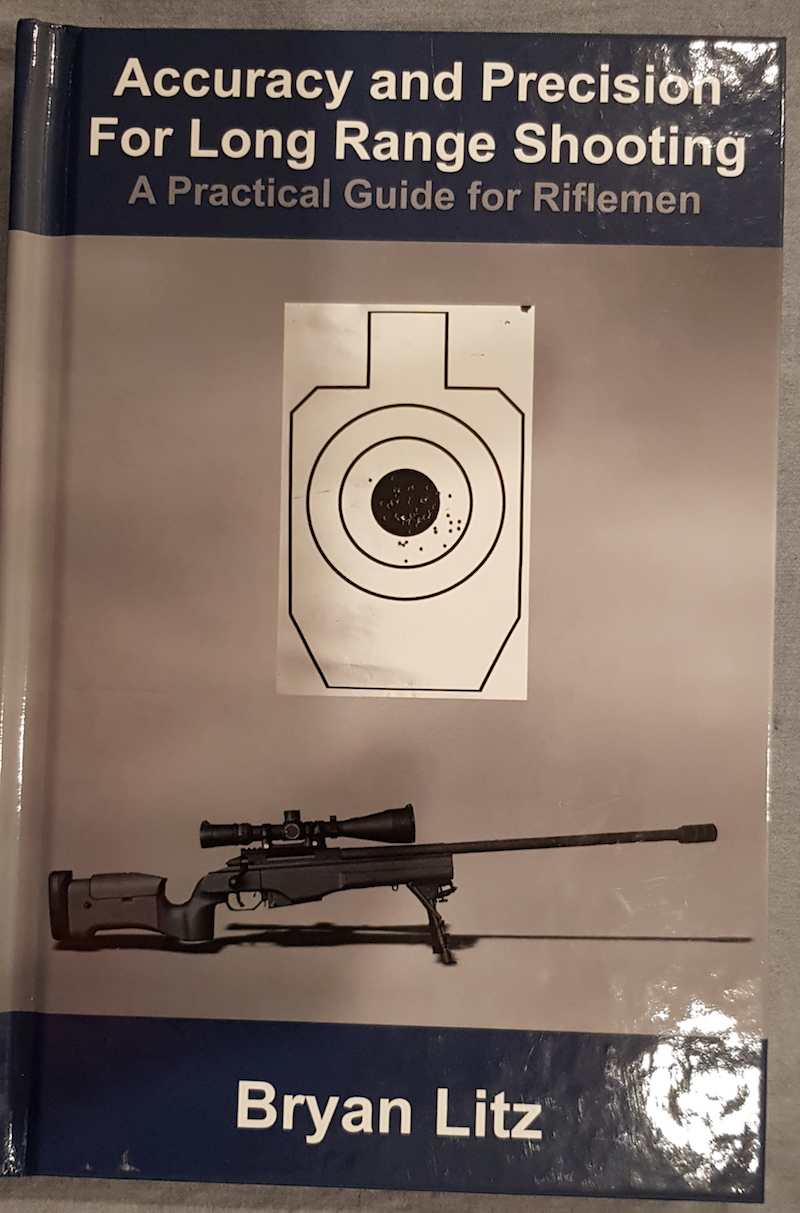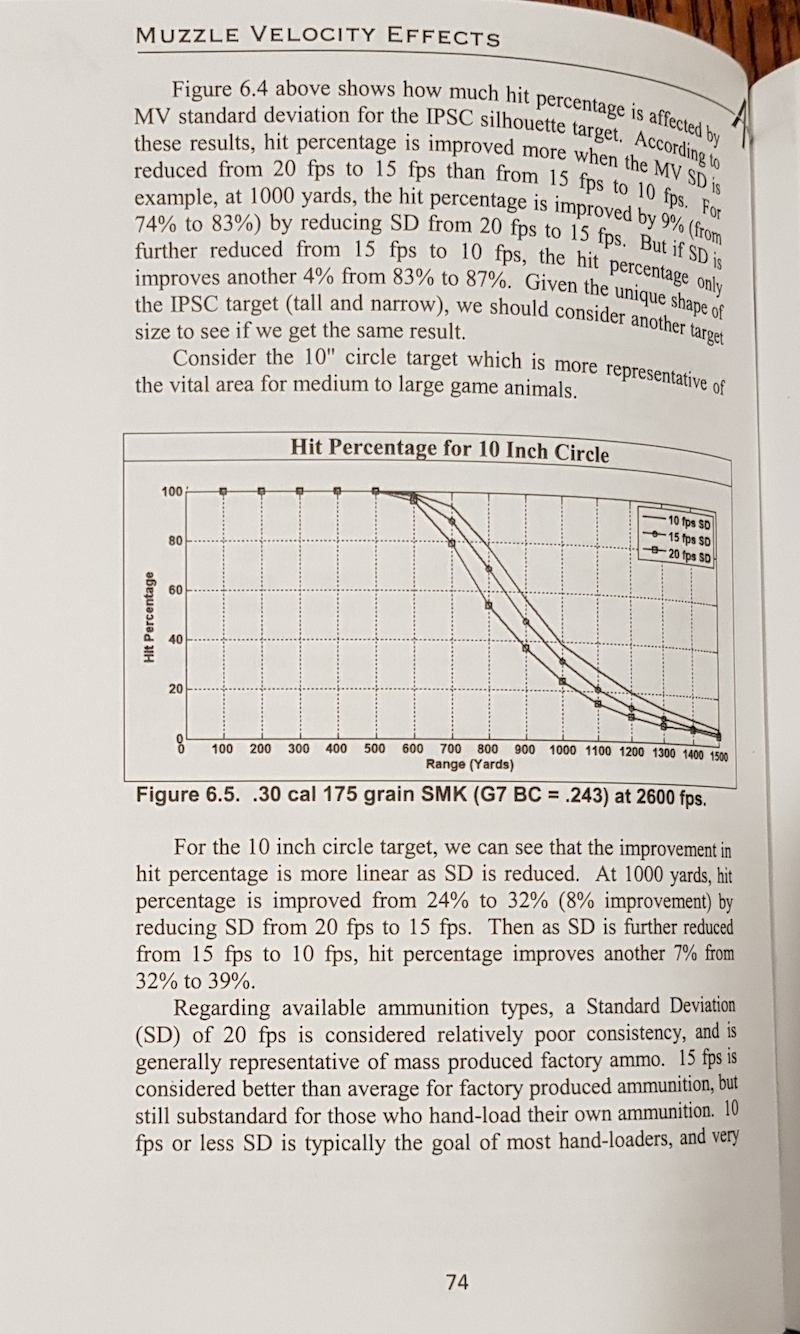Here is Brian Litz's book where he looks into the relative contribution of several uncertainties like wind, MV variation and rifle/shooter grouping capability.
He looks at several scenarios, corresponding to a typical shooter without special gear/under stress, a good shooter with MOA capability and fair windreading skills and an excellent shooter with 0.5 MOA gear and super wind skill to see who would benefit from controlling each variable like muzzle velocity. He uses standard deviation because it's tractable mathematically (Root sum of squares) but roughly the ES for 95% of shots will be 1.96 sdx2. So an SD of 10 fps corresponds to 19/20 shots being in a range of +/- 20fps.
He then simulates 1000 shots with a variety of MV, wind and other errors and sees where they land, then calculates hit probabilities for various sizes of targets. His program AB Analytics can do this with whatever uncertainties you choose, ranges or MV, BC etc you pt them in. I can't get out the nice graphics he has but it seems to work OK.
Here are his simulations showing the benefits of reducing variations in MV for a hypothetical Palma type .308:
He doesn't look specifically at how much MV ES contributes to elevation spread. Since you're summing squares, it wouldn't be much until you can shoot 0.5 MOA, which is why people intuitively say "just go and shoot a deer". But of course looking at these curves the F class competitor will never shoot MOA (say around 10" dia) at 800 yards unless you have SD around 10 fps (and if your SD is 20fps, you will only be able to do 1.5 MOA at 700 yd, other things being equal). You can also see that, for someone planning to shoot tahr at 500yd, MV SD doesn't start to make a difference; even 20fps SD doesn't reduce hit probability for the 10" target. It will be shooter grouping, range uncertainty and wind that are the limiting factors.
Welcome guest, is this your first visit? Create Account now to join.
Welcome to the NZ Hunting and Shooting Forums.
Search Forums
User Tag List
Results 1 to 15 of 30
Threaded View
-
13-08-2018, 10:49 PM #22Member

- Join Date
- Mar 2012
- Location
- Waikato
- Posts
- 2,186
Similar Threads
-
Adding to the spread
By Rock river arms hunter in forum Game Bird HuntingReplies: 2Last Post: 24-03-2017, 01:27 PM -
Vertical Stringing
By gqhoon in forum ShootingReplies: 11Last Post: 29-10-2016, 10:57 PM -
Extreme spread
By R93 in forum Reloading and BallisticsReplies: 4Last Post: 01-07-2012, 07:46 PM -
Getting movment into your pond decoy spread
By Baz in forum Game Bird HuntingReplies: 10Last Post: 11-04-2012, 11:33 PM -
Welcome & Spread the word that there's a new forum in town
By Philipo in forum IntroductionsReplies: 14Last Post: 25-12-2011, 12:48 AM
Tags for this Thread
Welcome to NZ Hunting and Shooting Forums! We see you're new here, or arn't logged in. Create an account, and Login for full access including our FREE BUY and SELL section Register NOW!!




 11Likes
11Likes LinkBack URL
LinkBack URL About LinkBacks
About LinkBacks






 Reply With Quote
Reply With Quote


Bookmarks